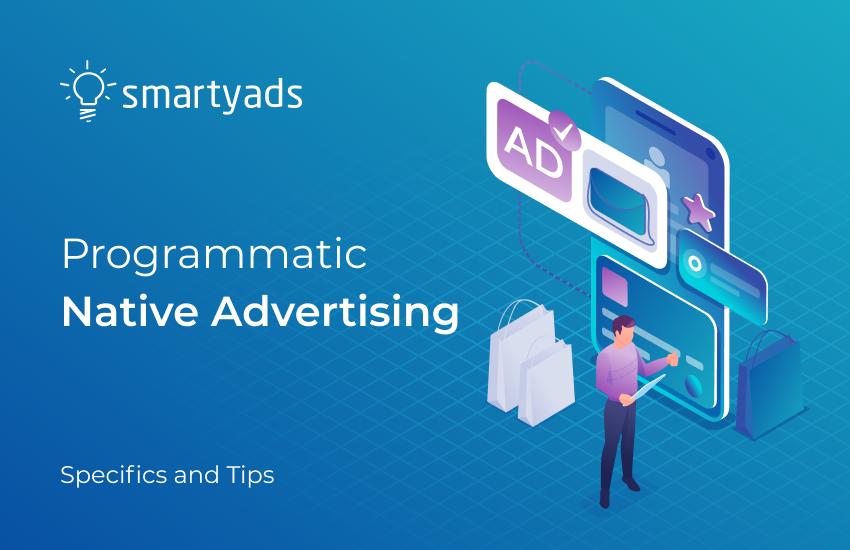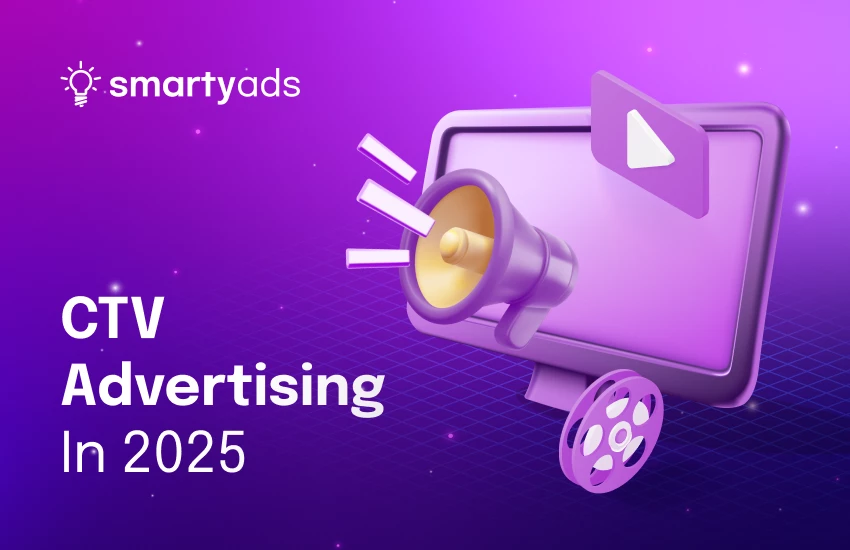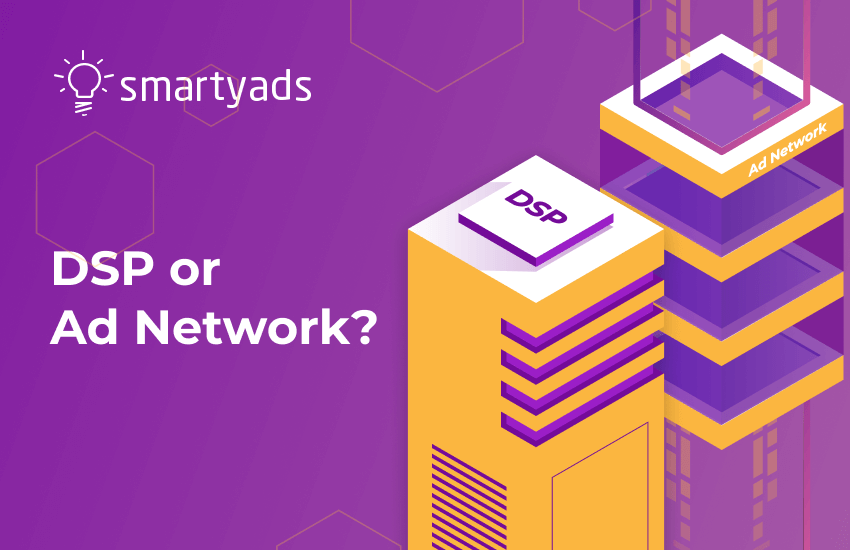Online audiences are growing savvier — and more selective. Traditional ads often feel like a jarring and annoying experience, where the user ends up with outright ad-blocking. That’s where a more innovative approach may come handy: a content-aligned promotion that feels less like an ad and more like a recommendation.
As brands race to get noticed in crowded landscape, context-driven ad formats are gaining ground quickly. Thus, marketers are turning to innovative solutions that mix with the user experience rather than interfering with it.
In this article, we’ll examine the mechanics behind this shift and discover which combo of "top approach + programmatic native advertising platform" provides the right performance effects for media buyers.
Key Takeaways:
- Programmatic native advertising combines automated ad buying with ad formats that match the look and feel of the platform, delivering contextually relevant and nonintrusive experiences to the target audience.
- Native ads integrate seamlessly into feeds, search results, recommendation widgets, and in-app environments, improving user engagement, reducing ad fatigue, and bypassing most ad blockers.
- Key benefits include higher CTRs, better brand awareness, improved trust, and mobile responsiveness — all while maintaining creative control and frequency caps through DSP automation.
- Best practices for success involve precise audience targeting, avoiding hard-sell messaging, experimenting with creatives and formats, leveraging automated optimization, and aligning native ads with a broader omnichannel strategy.
- When combined, programmatic’s automation and native’s contextual relevance maximize reach and conversion potential at optimal costs.
- Advertisers can implement, manage, and optimize such campaigns via SmartyAds DSP, which offers multiple native ad formats, advanced targeting tools, creative building features, and a wide network of premium publishers.

What is programmatic native advertising?
Programmatic advertising is digital advertising based on real-time bidding and machine learning. It chooses the most relevant creative and serves it to the user. Thus, advertisers and media buyers can achieve a far more targeted response than was possible with manual placement.
With programmatic ad buying, media buyers can avoid negotiations with publishers or content marketers and display targeted native ads only to the right audience.
What is native advertising? Native ad creatives organically fit the look and feel of the website or app where they are being placed. The only way you can tell that it is actually an ad is by finding a native ad headline that contains a “promo” or “ad” tag.
Native ads sometimes resemble editorial content — it can be an article headline in a news feed, a post with a photo in the Instagram feed, or a video on YouTube or social media platforms, promoted listings, etc.
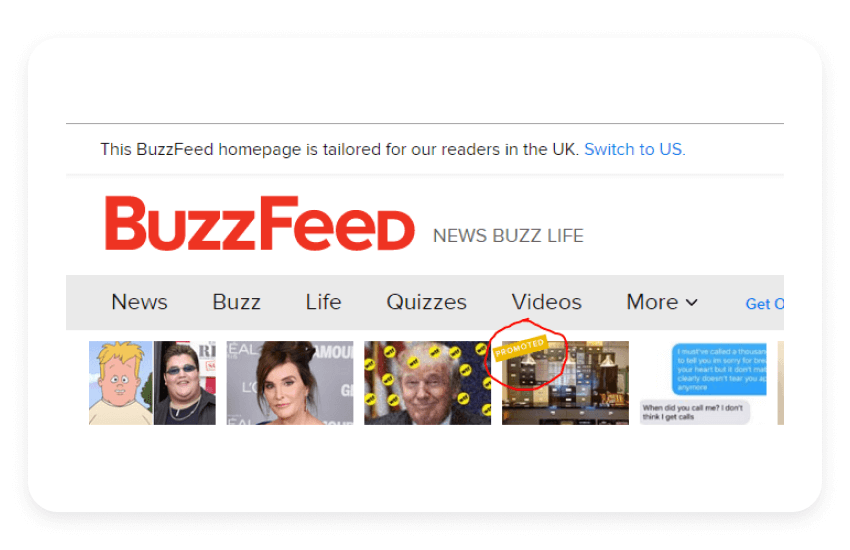
Web sources often feature interesting stats about native ads' performance. The infographic below illustrates the benefits of native advertising over banner ads. Among those are better visual engagement and better purchase intent.

Native programmatic advertising is powerful - just look at programmatic advertising examples. Applying both is a technique designed to enable media buyers to create nonintrusive ads that are shown only to users who are most likely to convert.
Researchers found that native advertising has a significant effect; it engages well and has higher conversions since it often includes valuable content that affects purchase behavior.
If you create native advertising, demand-side platforms will automatically find the best placement to locate the creative in the publisher's content.

How do native ad units work?
These ad units work by making ads feel like a natural part of the website, app, or social media platform where they appear. Here’s how it works in a simple way:
1. They match the platform
The type of ad depends on where it's being shown. For example, a news website will usually feature written ads, while YouTube will use videos. The ad topic should also make sense for the platform. So, you wouldn’t see perfume ads on a gaming site or craft kits on a car blog — the content has to fit the audience.
2. They blend in with regular content
Native ads are made to look like normal content. They’re not flashy or loud. That means each ad has to be created specifically for the platform — you can’t just copy a Facebook post and use it on Instagram or Twitter. This can make the ad more expensive to create, but it helps it feel more natural to the user.
3. They look like everything else
They use the same colors, fonts, and layout as the rest of the content on the site. They should look like a regular post or article, not stand out as something different.
4. They are labeled in a soft way
They are usually marked with small tags like “Sponsored” or “Partner Post”.” On social media, these ads often look just like a normal post from someone you follow.
5. They give something useful to the reader
A good native ad is helpful or interesting. For example, a list of top cloud storage tools would still be useful to a reader, even if one of those tools is being promoted in the sponsored article.
Native ad formats (ad types)
DSP can offer different native ad formats for advertisers, for example:
- In-feed: displayed in the publisher’s feed, alongside their regular surrounding content. The creative matches the type of content that the publisher produces. For example, a tweet with a picture or video and a link on Twitter.
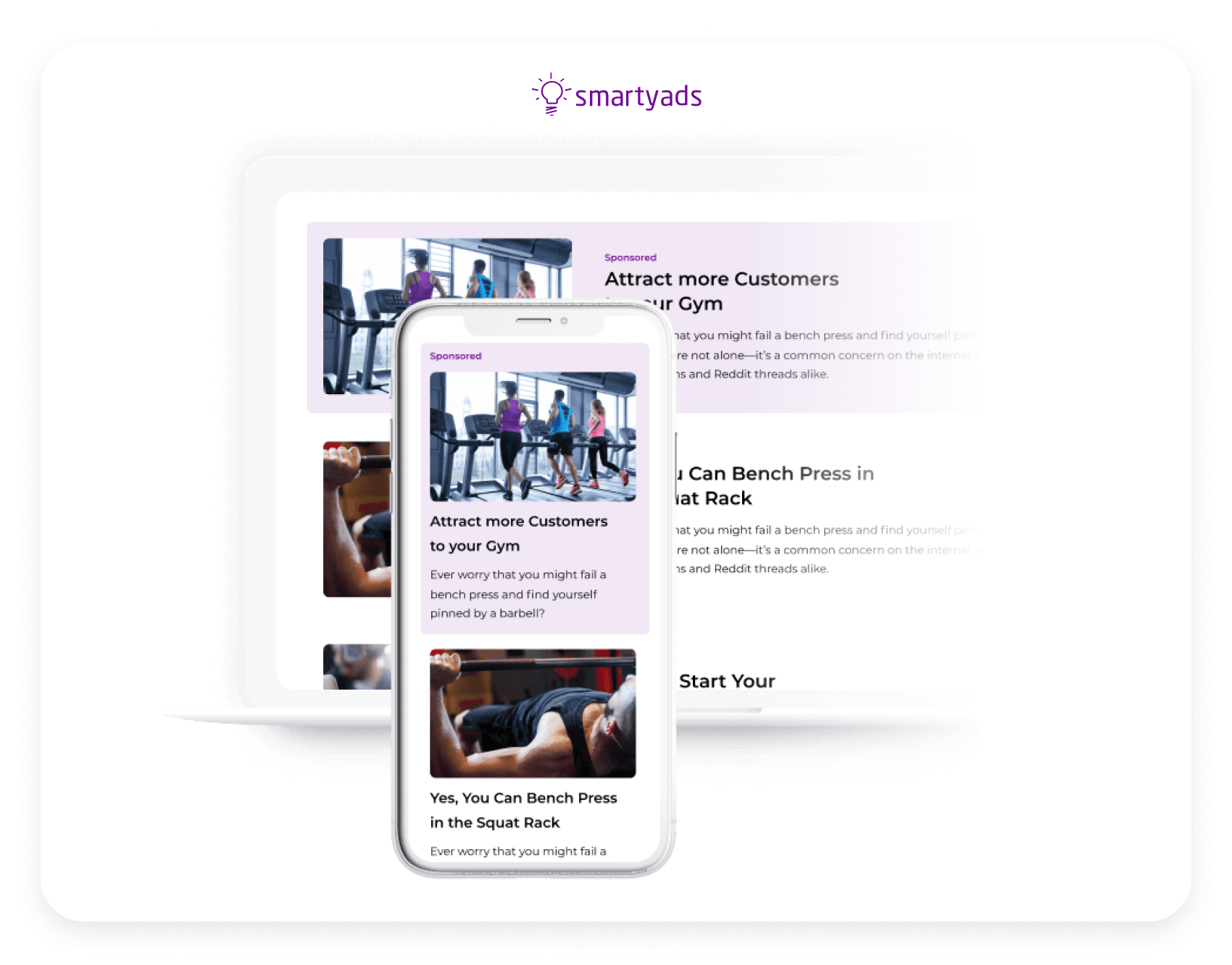
- Search: The ad appears at the top of search results and looks exactly like other results. It is a popular native search ad offered by Google.
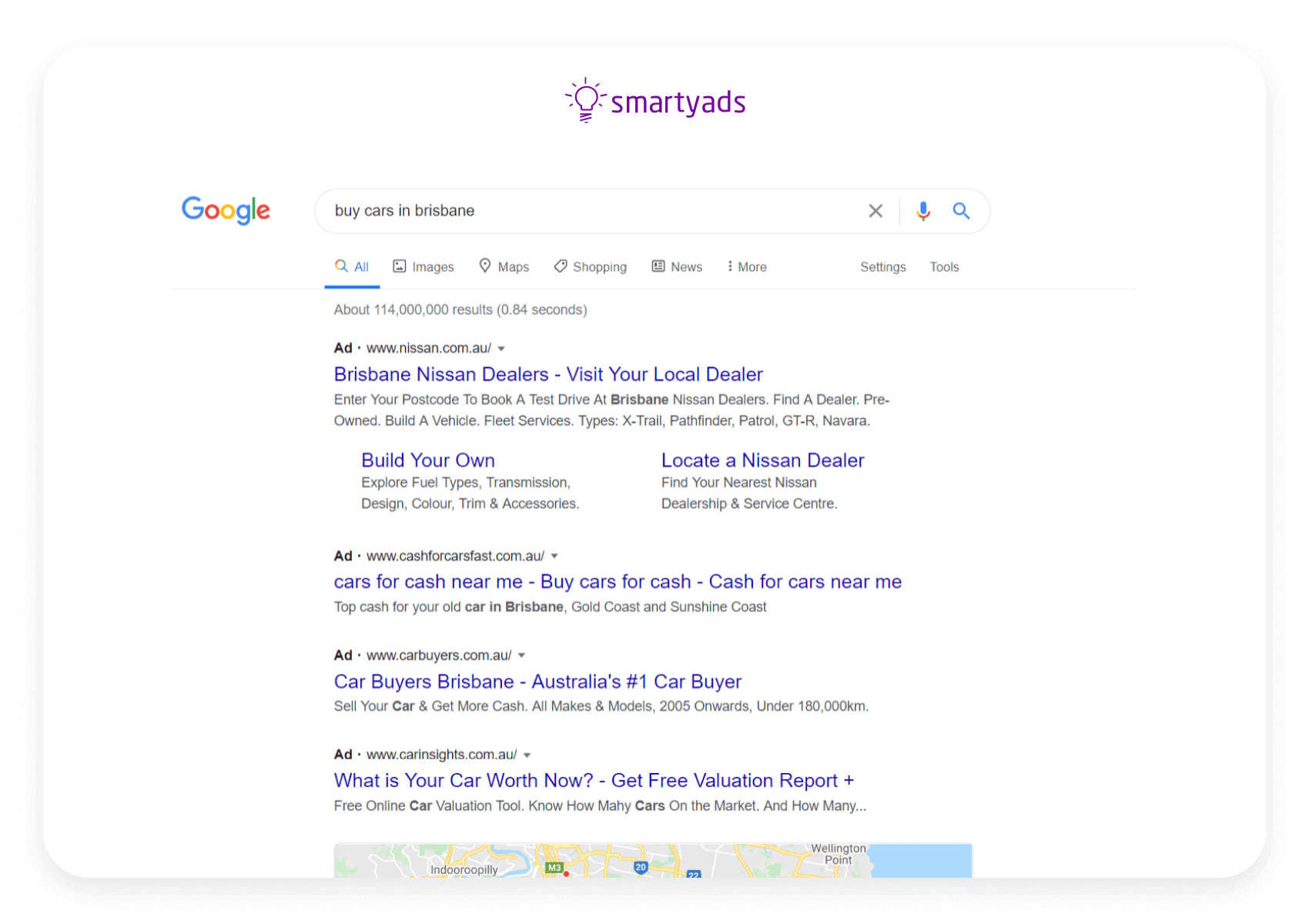
- Recommendations: it looks like recommended articles and videos that appear beneath the piece of surrounding content that you read. After the user clicks on the recommended link, they are taken to the other website. Sometimes these widgets contain links to other articles and sometimes they have ad materials. Recommendation widget natives are also available at SmartyAds DSP.
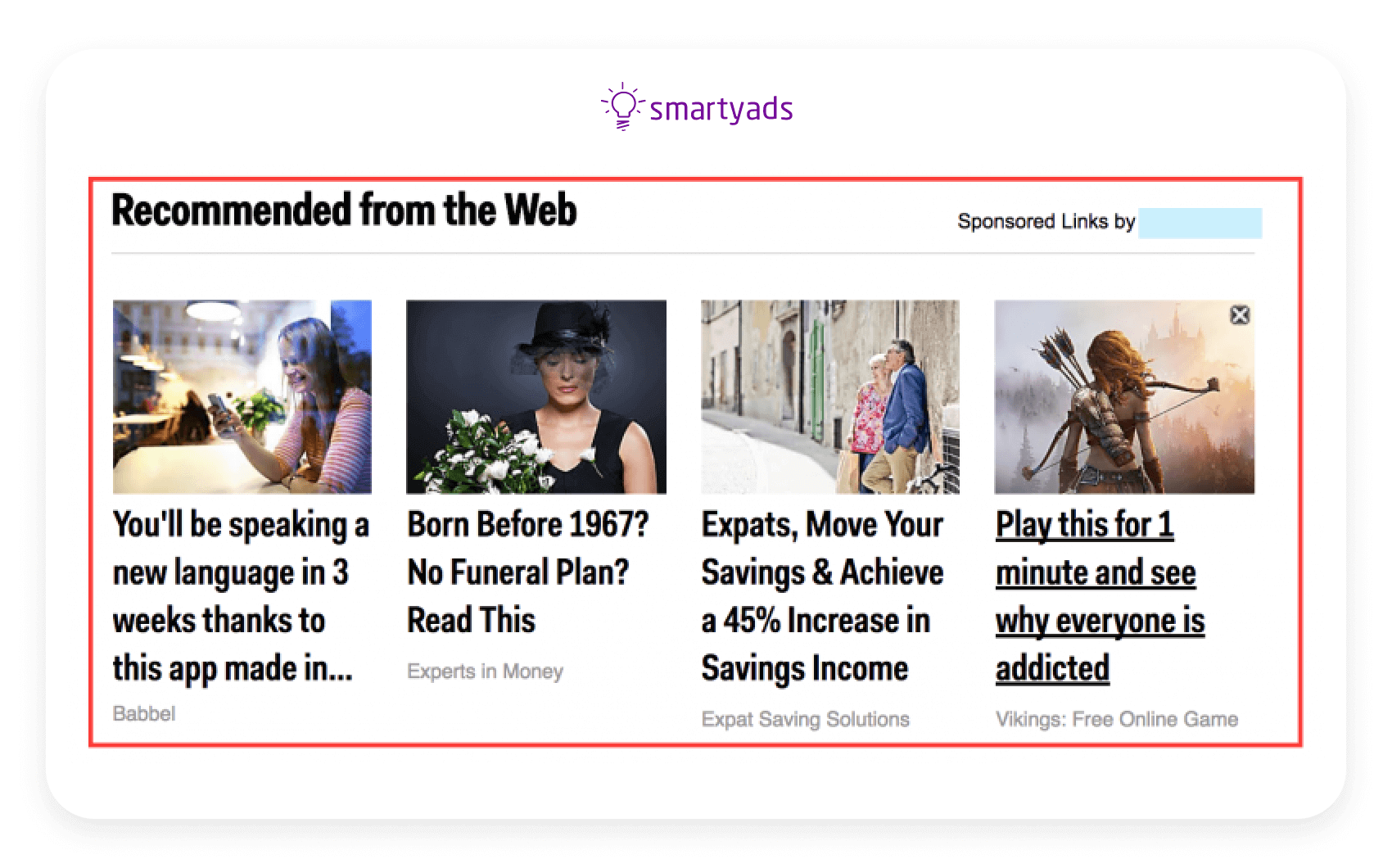
- In-app native: designed to match the feel and look of the apps where they are placed. Here is an example of an in-app native video advertising (mid, pre, and post-roll). In the corners, you can see additional contextual ads from YouTube.
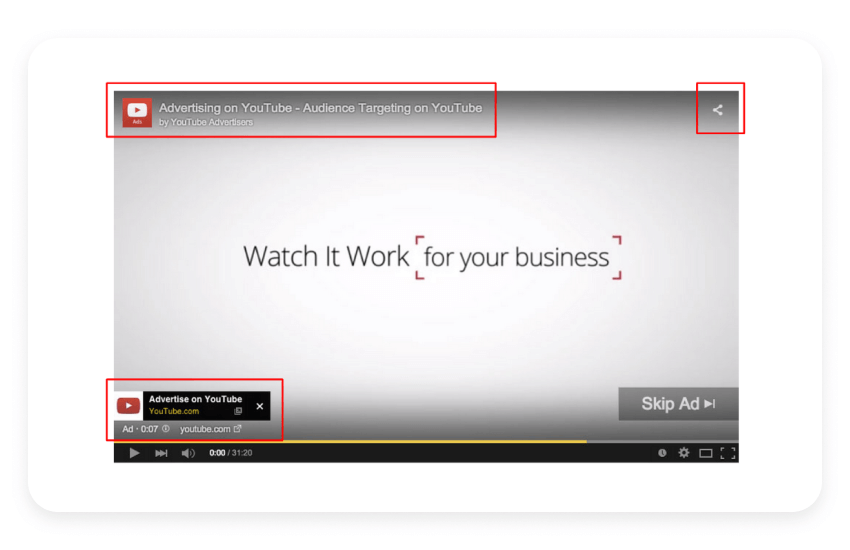
Benefits of programmatic native advertising
If you want to make native digital advertising, you’ll need to put effort into designing the creatives. You have to create pieces of content rather than overly selling banners and make sure that they match the publisher’s feed if it is displayed on social media.
Using programmatic and native advertising has multiple perks in the long run. Below are some examples of why programmatic advertising boosts viewable impressions. With native ads programmatic is surely stronger; here’s why:
Better user experience and brand engagement
Users do not have to feel like they are being attacked by ads as soon as they browse the website's content – on programmatic platforms, media buyers have frequency capping, meaning that you can set the optimal number of times one user will see your ad within 24 hours.
If the user has to close the 100th pop-up, they will probably remember your brand name and brand logo but in the context of being extremely annoyed with them. With native advertising controls on a programmatic platform, you will be able to fully adhere to user preferences.
Ad-block friendly
Because of intrusive advertisements, more users are turning to ad blockers, which ban all banners and pop-ups on the website. Ad blockers do not detect native advertising because it naturally appears in widgets, etc.
More trustworthy
Native display advertising is not so openly selling, so users are more likely to pay attention.
Users also admit that native ads are usually more creative and thought-provoking than traditional banners.
Delivers value
Creative native ads do not just sell a picture of a product. They usually include some type of explanatory article, storytelling video, or infographic.
You can barely learn anything besides the product information from the banners or display ads, but you can get interesting insights from the native advertising. With programmatic native ads, advertisers can put relevant experiences in the right context.
Device-responsive
Natives work perfectly well with any mobile device since they are just a part of the main content. Mobile native advertising is user-friendly because it is displayed in the appropriate places, so the experience doesn’t interfere with the content.
Moreover, native advertising generates user likes and increased engagement, which is something that banner ads and other display ads can’t do. With the cross-device approach of programmatic, brands can serve their ads on different channels.
Great for brand awareness
Programmatic native advertising is usually branded as informative content. Thus, it works best for the top of the funnel where customers just discover that they have a problem and look for solutions.
Programmatic is also a perfect top-funnel instrument, so media buyers will benefit from it a lot.
Higher click-through rates
On average, native advertising just performs better as it uses machine learning and contextual signals. Their click-through rate is 40 times higher than that of traditional display ads.
Combining better user experience and valuable marketers' messages, native ads capture the attention of the user and offer actually interesting information. In turn, programmatic will generate higher CTR thanks to the carefully selected placements.
More power over ads performance
If you were to create sponsored content with a news outlet, you would not be able to choose who to show the piece to (with manual ad placement).
You would also have to put so much effort into negotiations and article creation to just win over the audience of a single source that not all of your target audience might be reading.
Programmatic native ads allow you to control display advertising campaigns and their flow. With such functionality, you can achieve much better performance as programmatic adds relevance to the impression.
Difference between programmatic advertising vs native advertising
For starters, we need to point out that there is no “programmatic vs native advertising” dilemma because these refer to the different dimensions. Programmatic is about the automation of ad buying (enabled by AI-driven AdTech platforms), and native is about the format of ad that mixes us with the rest of the content.
To avoid excessive explanation, native can be a part of programmatic.
To list all the differences between the two, you can review the table below:
| Programmatic | Native |
| Refers to the method of media buying (enabled by automated AdTech platforms). | Refers to the form of ad (format) that organically fits the rest of the content. |
| First appeared in 2007 | First appeared in 2010 |
| Is not entirely wrapped around native ads – it can also be used for purchasing banner ads, DOOH, audio, video ads, and more. | Native ad units can also be placed manually without programmatic placement. Still, programmatic placement is faster and more cost-efficient. |
| Most frequently, ads take the form of recommendation widgets, in-feed ads (social). | It can also take the form of articles, videos, or social media posts. This means that with manual placement, there is a bit more freedom in unit implementation. |
5 Best practices in programmatic native advertising
Programmatic native advertising works only if you know how to use it correctly. These simple tips should help you gain all the benefits of this ad type.
Firstly, you need precise targeting
If you do not want to spend hundreds of dollars on showing ads to irrelevant and uninterested users, you have to understand the age, location, interests, and gender of your target audience.
After this, you need the right platform to serve your native programmatic ads to those audiences.
Where does your target audience spend time — is it Instagram, Twitter, Facebook, TikTok, news portals, or particular websites? Suit your native advertising specifically for particular channels and send them on these platforms automatically.
Avoid hard selling
Native ads are not big on hard sells, with luscious product descriptions and overly promotional headlines. Your native advertising creative should not be ignored, so we recommend offering actually valuable content — offer advice, tell stories, and share interesting facts.
For example, avoid headlines like “our product will make your hair shiny” but opt for “5 tips for shiny hair” instead and include your product in some of the advice.
Both the user and the publisher will benefit from such interactions since users will read relevant information, and you will get more clicks and opportunities to showcase how exactly your product works.
However, hard sales and coupons in programmatic native ads will go well for customers who are already at the bottom of the funnel.
Experiment, track, optimize
Accommodate programmatic native ads to have a lot of room for the experiment. With such an approach, you can work with different audiences, platforms, and content types.
So, do not hesitate to try different things to see what works best for different goals (brand awareness, sales, leads, etc.). A/B testing does not work in a traditional way here. You have to do different types of content (videos, articles, photos, search, audio) and do the testing within each category.
Change one thing at a time, compare the results, keep the good change, and move on to the next one. After you have perfected the native ad, you can compare different content types and decide what works better.
Craft creatives in minutes
With the advent of platforms driven by smart algorithms, programmatic has become really intelligent. Today, its functionality is not bound by smart bidding or ad placement. It can also optimize budgets and even enable the media buyer to create a creative unit in seconds.
This is exactly what is becoming possible with SmartyAds DSP since the platform has recently launched a creative builder – the feature that eases creative creation and streamlines it right within the DSP platform.
Use automated optimization
The most common fear of media buyers who have never tried automated ad buying is overspending. However, the platform will not spend more money than you indicated in your campaign settings. More so, you can instruct it about spending trajectory—to spend the ad budget ASAP or evenly throughout the period.
In addition to budget limits, the media buyer can set up auto optimization rules on DSP, according to which, the platform will single out only those sources, that apper to be most beneficial for you in terms of selected performance criteria.
Make it a part of the strategy
Don't work with programmatic native advertising alone. You also need equivalent banner ads, content marketing, and working with influencers to fully capture the audience at all steps of their customer journey. All the ads should work together to create an effective marketing strategy.
Conclusion
With native advertising programmatic campaigns become stronger. Why? Because the combination of both worlds amplifies the strengths of each. While the first one alleviates the pain points that usually drive customers away (intrusiveness), the second one makes it possible to locate the ads in those places where users are most susceptible to ad messages and where costs per impression are optimal for media buyers.
Follow native advertising trends and native best practices to achieve desired outcomes with your campaigns.
Don’t know where to start? Check out SmartyAds demand-side platform! We offer 5 types of programmatic native ads and a plethora of publishers to work with!
Raise effective native campaigns on SmartyAds DSP!
FAQ
Your creative needs to mirror the host platform’s style—text, imagery, layout—while offering real value. Make sure your ad still performs even when elements are minimal, like cut-off headlines or missing logos. Testing and refinement are essential: run multiple creative variants, optimize headlines, visuals, CTA placement.
While performance is promising, native programmatic faces hurdles such as inconsistent measurement standards, higher creative production demands, and limited publisher support. Not every site supports native integrations, and results can vary.
By using machine learning and AI to understand context—rather than relying solely on user data—campaigns can remain relevant while respecting privacy. AI enables smarter placement decisions based on content semantics, improving effectiveness without overly invasive targeting.
Programmatic DSPs—like SmartyAds DSP—enable cohesive deployment of native formats across multiple publishers. They support in-feed, search-like, in-app, and recommendation widget formats, with built-in targeting, analytics, and optimization tools.

